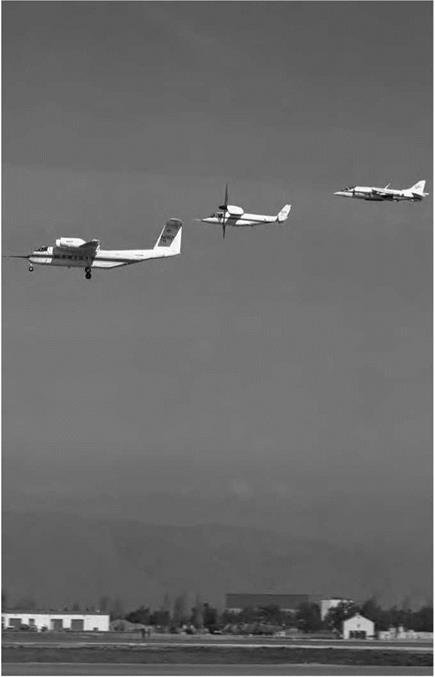Challenges
![]() As clearly evidenced by U. S. military experiences, the technical area of high-angle-of-attack/departure/spin behavior will continue to challenge design teams of highly maneuverable aircraft. The Nation has been fortunate in assembling and maintaining unique expertise and facilities for the timely identification and resolution of problems that might have had a profound impact on operational capability or program viability. In the author’s opinion, several situations are emerging that threaten the traditional partnerships and mutual resources required for advancing the state of the art in high-angle-of-attack technology for military aircraft.
As clearly evidenced by U. S. military experiences, the technical area of high-angle-of-attack/departure/spin behavior will continue to challenge design teams of highly maneuverable aircraft. The Nation has been fortunate in assembling and maintaining unique expertise and facilities for the timely identification and resolution of problems that might have had a profound impact on operational capability or program viability. In the author’s opinion, several situations are emerging that threaten the traditional partnerships and mutual resources required for advancing the state of the art in high-angle-of-attack technology for military aircraft.
The end of the Cold War has naturally resulted in a significant decrease in new military aircraft programs and the need for continued research in a number of traditional research areas. As technical personnel exit from specialty areas such as high-angle-of-attack and spin behavior, the corporate knowledge and experience base that was the jewel in NASA’s crown rapidly erodes, and lessons learned become forgotten.
Of even more concern is the change in traditional working-level relationships between the NASA and DOD communities. During the term of NASA Administrator Daniel S. Goldin in the 1990s, NASA turned its priorities away from its traditional links with military aircraft R&D to the extent that long-time working-level relationships between NASA, industry, and DOD peers were ended. At the same time, aeronautics funding within the Agency was significantly reduced, and remaining aeronautics activities were redirected to civil goals. As a result of those programmatic decisions and commitments, NASA does not even highlight military – related research as part of its current mission. It has become virtually impossible for researchers and their peers in the military, industry, or DOD research laboratories to consider the startup of highly productive, unclassified military-related programs such as the NASA F/A-18 High – Angle-of-Attack Technology program.
Meanwhile, leaders in military services and research organizations have now been replaced with many who are unfamiliar with the traditional NASA-military ties and accomplishments. Without those
relationships, the military R&D organizations have turned to hiring their own aeronautical talent and conducting major research undertakings in areas that were previously exclusive to NASA Centers.
Finally, one of the more alarming trends underway has been the massive closures of NASA wind tunnels, which have been the backbone of NASA’s ability to explore concepts and ideas and to respond to high – priority military requests and problem-solving exercises in specialty areas such as high-angle-of-attack technology.
![]() In summary, this essay has discussed some of the advances made in high-angle-of-attack technology by NASA, which have contributed to a dramatic improvement in the capabilities of the Nation’s first-line military aircraft. Without these contributions, many of the aircraft would have been subject to severe operational restrictions, excessive development costs, significantly increased risk, and unacceptable accidents and safety-of-flight issues. In the current era of relative inactivity for development of new aircraft, it is critical that the resources required to provide such technology be protected and nurtured for future applications.
In summary, this essay has discussed some of the advances made in high-angle-of-attack technology by NASA, which have contributed to a dramatic improvement in the capabilities of the Nation’s first-line military aircraft. Without these contributions, many of the aircraft would have been subject to severe operational restrictions, excessive development costs, significantly increased risk, and unacceptable accidents and safety-of-flight issues. In the current era of relative inactivity for development of new aircraft, it is critical that the resources required to provide such technology be protected and nurtured for future applications.
|
|
Three important NASA research aircraft representing different approaches to V/STOL flight pass in review over NASA’s Ames Research Center. Left to right: the deflected lift QSRA, the tilt rotor XV-15, and the vectored-thrust Harrier. NASA.











